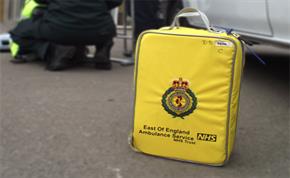
Meningococcal disease is the leading infectious cause of death in early childhood.
Meningococcal disease can appear as meningococcal meningitis or meningococcal septicaemia, or a combination of both; septicaemia is the more life-threatening form of the disease and is more dangerous when there are no signs of meningitis.
When people think of meningitis, they most often think of the associated non-blanching rash, which can look like bruising. But meningitis can be present with no rash at all – more often than not children and young people in particular will present with mostly non-specific symptoms. Never wait for a rash to appear before you suspect meningitis as deterioration can be extremely rapid.
The more common symptoms and signs for bacterial meningitis and meningococcal septicaemia to look out for include:
A signs and symptoms app can be found at http://www.meningitisnow.org/.
Treatment of bacterial meningitis (without non-blanching rash)
Transfer children and young people with suspected bacterial meningitis without non-blanching rash directly to secondary care without giving parenteral antibiotics.
Treatment of suspected meningococcal disease (meningitis with non-blanching rash or meningococcal septicaemia)
Give parenteral antibiotics (intramuscular or intravenous benzylpenicillin) at the earliest opportunity, either in primary or secondary care, but do not delay urgent transfer to hospital to give the parenteral antibiotics.
Withhold benzylpenicillin only in children and young people who have a clear history of anaphylaxis after a previous dose; a history of a rash following penicillin is not a contraindication.
Published 16th December 2014